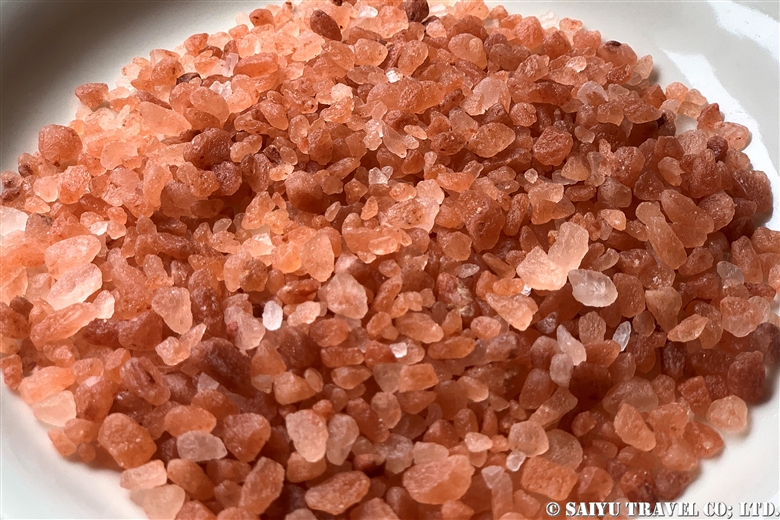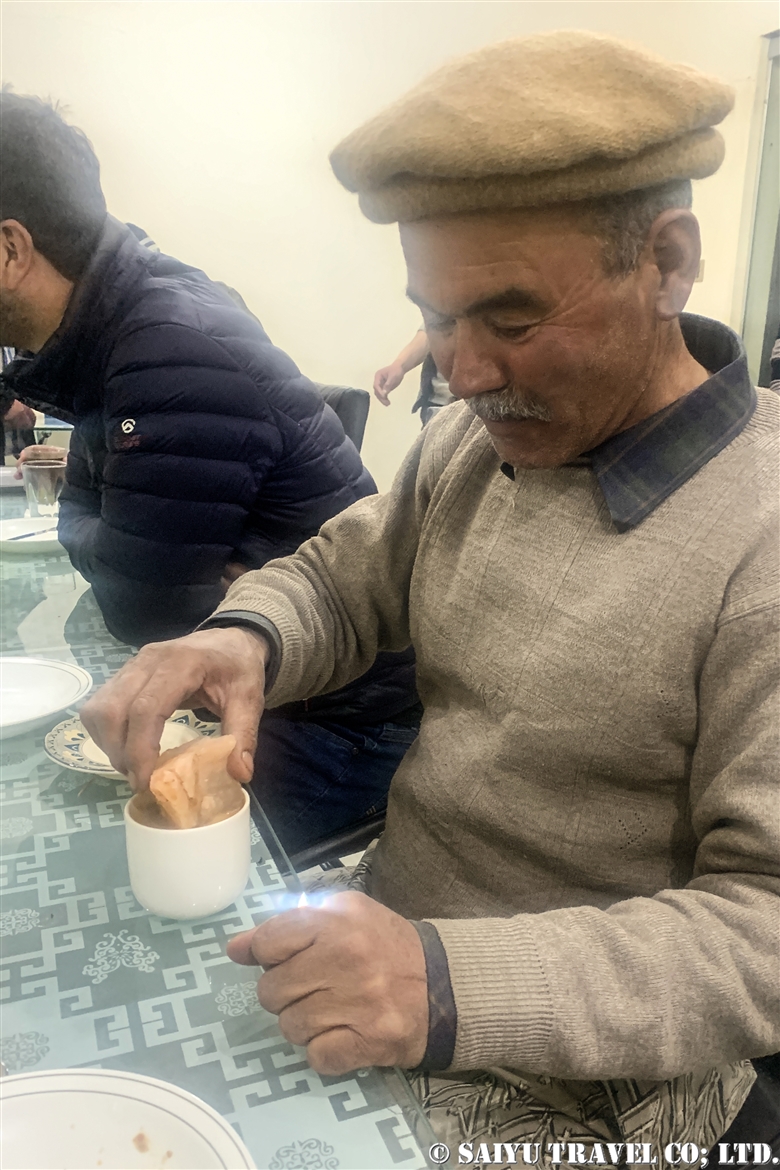
Most of the rock salt distributed in the world as “Himalayan Rock Salt” and “Pink Salt” is produced in the salt mines of Pakistan. Among them, the Khewra Salt Mine is famous, as it is also known as a tourist destination where people can see inside the mine and see the underground mosque that is carved into the pink rock salt.
For this visit, we did not go there to see the popular tourist destination, but instead, to have the opportunity for searching for the Punjab Urial, wildlife which lives in the “Salt Range” the mountainous range near the salt mines.

The Salt Range is the southern tip of the Himalayas in Pakistan’s Punjab area, between the Pothohar Plateau in the south, to the Jhelum River in the north.
Himalayan rock salt is produced from a thick evaporite layer, dating back from the Ediacaran period to the early Cambrian (600-540 million years ago) in the fold and thrust belt of the salt range. The layers of the Cambrian and Eocene sedimentary rocks that were pushed up onto the newer age sedimentary rocks and eroded away, revealing the salt range.
The fossils of the ancient seas were unearthed as a result of the collision between the Indian continent and Eurasian continent, showing us how magnificent and historically significant these area is.

This is one of the many rock salt mines found on the Pothohar Plateau.
There is a particular story about the salt range that captures the imagination. Legend has it that Alexander the Great’s army discovered this salt range. During his expedition in India, in 326 BC, it is said that Alexander the Great’s war horse was licking the ground and that was how they realized the salt was there. In fact, the Battle of Hydaspes, which was a battle between Alexander the Great’s army and the Indian King, is on the banks of the Jhelum River (the Ancient Greeks called it Hydespas) and they had to have passed this salt range.

The surface around the entrance to one of the salt mines is encrusted with salt crystals.

The truck enters the quarry. According to the truck driver, the mining site is more than 2 kilometers away, so it needs to be carried out by truck.

This is one of the trucks that came out, loaded with salt. It must be a considerable weight, so it needs to go slowly on these unpaved roads.
The history of the rock salt mines began around 1200 AD, and the rock salt trade was active during the Mughal Empire. In 1872, under the British colony, the main tunnel of the Khewra Rock Salt Mine was built and made into a full-scale operation.

We walked into just one of the many mines of the salt range.

This is Himalayan rock salt that has been crushed into small pieces and commercialized for rock salt mills. In the past, there were no fancy hand-held mills, so rock salt was commonly sold as a powder or rock blocks, but now it is commonly sold as a set with smaller crushed salt and a mill in a fashionable package. It is a popular souvenir for foreign tourists because it is cheap and used in their daily lives. However, be careful because it is heavy for traveling.

This is the traditional use of Himalayan rock salt in northern Hunza. The chai is served salted instead of sweetened with sugar, in the Hunza region. The block of rock salt is used to stir it into the cup of hot chai.

This piece of salt was carried all the way from the Punjab salt range, to the villages of the Karakoram mountains, and the rock salt is indispensable for daily use in their hot chai.
Image & text: Mariko SAWADA
Visit: Dec 2020, Potohar, Punjab
Tag : Khewra Salt Mine , Indus Caravan , Punjab Urial , Pothohar Plateau , Jhelum River , Saiyu Travel Pakistan , the Battle of Hydaspes , Pakistan Travel company , Pakistan tour operator , Pakistan Photography Tour , Salt Range , Himalayan Rock Salt , Pakistan Blog , Pink Salt , Pakistan Travel Blog







